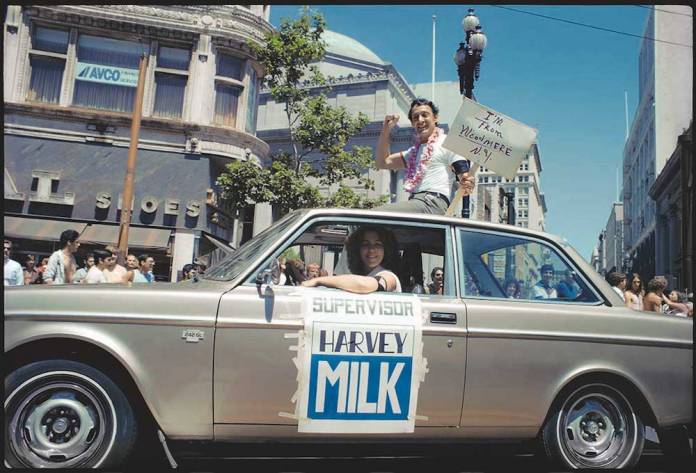How lucky are we to have had Dan Nicoletta among us these past 40+ years? The curious 20-year-old who worked at Harvey Milk’s camera shop just as the gay rights hero was launching into politics would become a supreme chronicler of San Francisco, documenting, over four decades, the politics, nightlife, personalities, and activism that have made San Francisco so fabulous, and also so important. If it happened on the queer scene, Dan was there, snatching the moment for posterity.
Now, a stupendous new compendium of his photography — LGBT San Francisco: The Daniel Nicoletta Photographs — has just been released by Reel Art Press, and Nicoletta will be in town from his recent new home in Oregon for a Thu/24 book-signing and artist talk at the SF Public Library followed by a fabulous star-studded reception hosted by Juanita More at the War Memorial Green Room. (Another signing takes pace at the Castro’s Dog-Eared Books Sun/27).
It’s an uncanny pleasure to flip through the 200+ beautifully laid out pages and realize just how many of these photos have become part of the city’s — and one’s own — visual DNA. Not just the perfect Harvey Milk photos, one of which became a groundbreaking US Forever Stamp in 2014, but also those of Gay Day parades and Castro Street Fairs, iconic drag queens and artists, transgender hunks and beauties, ACT-UP protestors and fierce club kids, all captured clearly and boldly in an array of photographic styles.
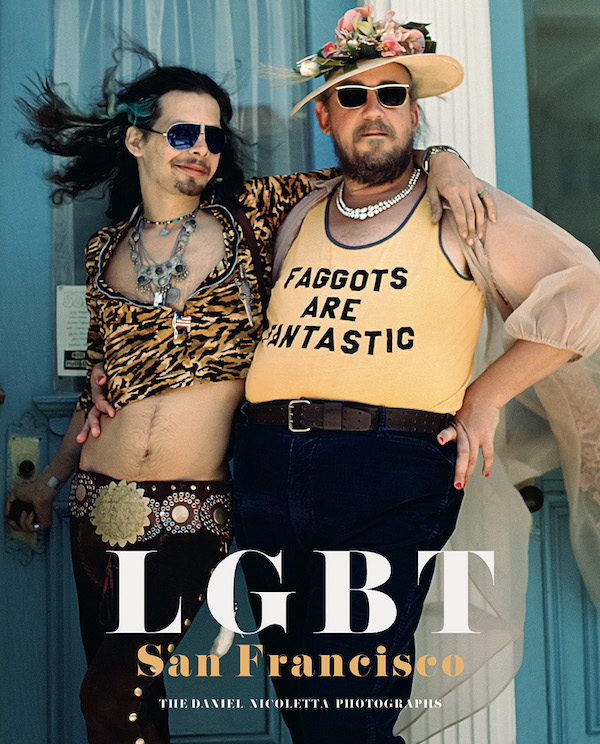
It’s especially striking to note that this was from a time when cameras weren’t ever-present, not to mention easily accessible with instantaneous results, and that even though many faces and moments were “made for the cameras” there was absolutely no guarantee the cameras would show up. And even though the book’s title focuses on LGBT San Francisco, the subjects — from Allen Ginsberg and Sylvester to the AIDS Quilt and the creator of the rainbow flag — reveal how much of this local history has become universal.
I spoke with Dan over the phone about the book, and how it felt to look back on his body of work in advance of his return to San Francisco.
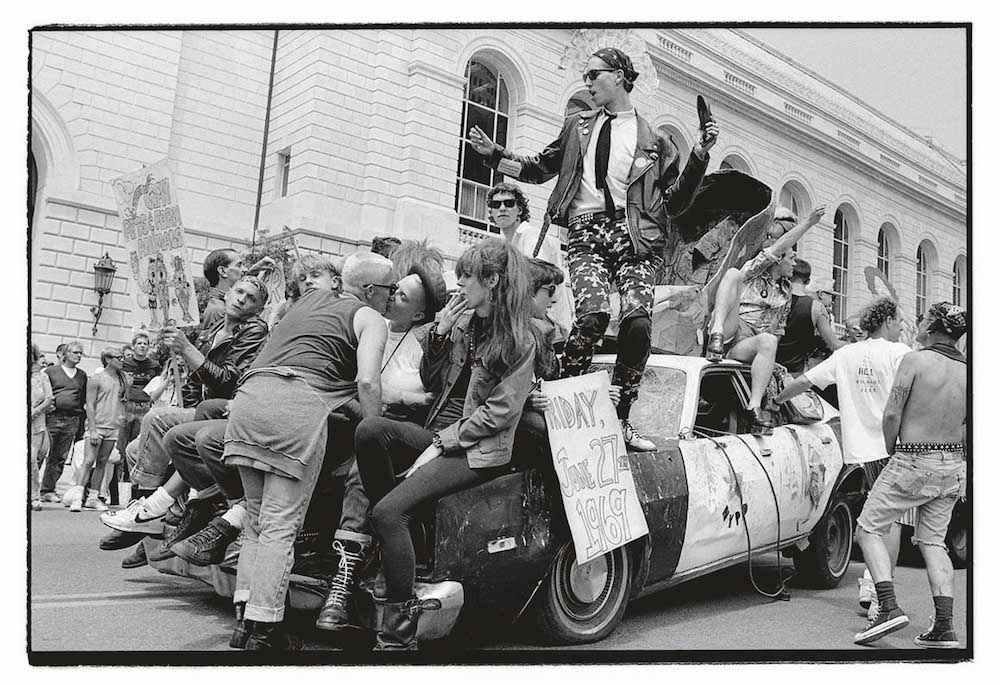
48 HILLS LGBT San Francisco is 312 pages long — and I know that that’s just the tip of the iceberg of what you’ve taken and developed over the past four decades, especially with your omnivorous eye. How did you whittle everything down, and do you consider this a kind of “last will and testament of Dan’s photography.” (I certainly hope not!)
DAN NICOLETTA Putting something like this together involved some parameters that I’m not necessarily wired for, and that’s why I was so fortunate to work with my editor, Tony Nourmand, on this. He really helped me with the shape of the book and gave me the sort of deadlines and structural suggestions that I normally wouldn’t encounter, although my pictures have been used in journalism and gallery displays. This was really Tony’s labor of love as well, and working with Reel Art Press was just wonderful.
About the pictures themselves — I like that word, omnivorous. I shoot now and think about it later, and a lot of this was that think about it later stuff. I keep moving forward, and left to my own devices I would be photographing Beltane or Foresty Camp, or something super-cool like that up here where I live now, in Grant’s Pass, Oregon.
But this project made me say, you know, you have to honor this previous work, honor the heart of your body of work. I said to myself, well, seeing as how you’re 62 and your memory is faltering, why not do it now? And someone wants to produce a beautiful book out of it! But of course I’ll continue to take pictures, and I already have another book in mind that focuses more on my studio photography.
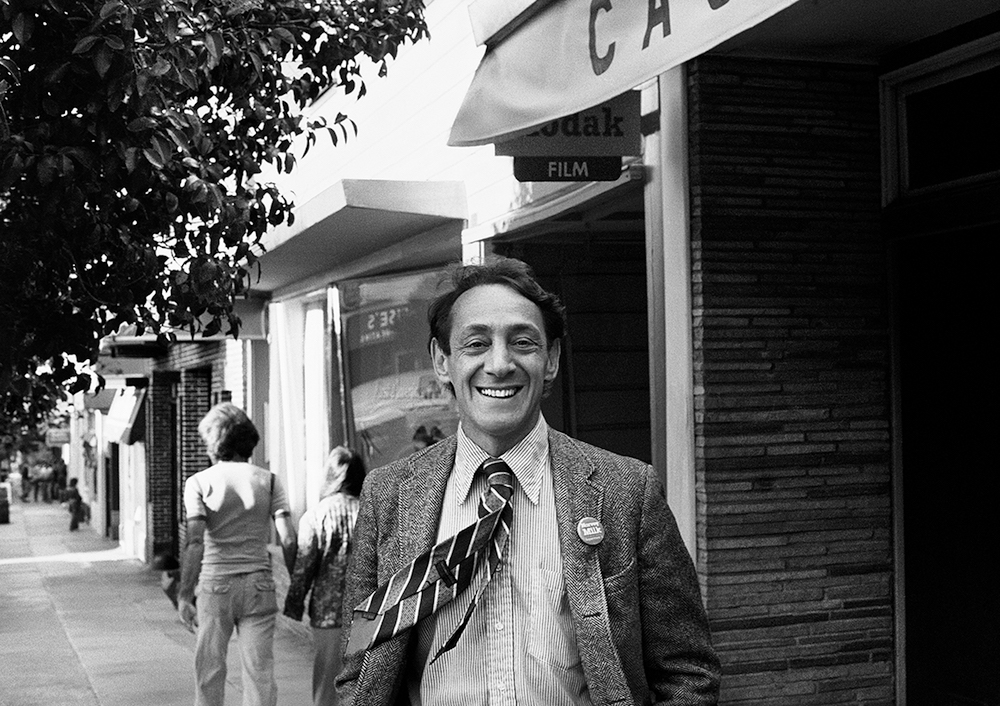
48 HILLS Your Harvey Milk photos are already part of national history, but I think one of the thing that will immediately jump out at readers is the way, in the book, you show them juxtaposed with their direct recreations in the 2008 movie Milk, which you shot on set. Can you tell me some of the experiences of shooting those similar pictures 30 years apart, and some of the emotions it may have brought up.
DAN NICOLETTA Regarding being on the set of the Milk movie, the courtship happened from my direction [laughs] since they had the formality of union restrictions. Phil Bray was the official Milk set photographer and he happened to be a prince. And Dustin Lance Black, the writer, wanted me there as well.
They got me on as a “special” which meant I had five days to do an editorial exploration, but once I was there, Phil took me under his wing and taught me the ropes of how not to step on toes, and so it was this whole organic process of learning how to be both a “special” and the primary source of some of these images. There was a bit of vertigo there for everybody. But the producers were so glad that I was there, and it turned into 10 of the best weeks of my life.
I’ll tell you a story that you’ll love, coming from the music and nightlife angle. We were shooting the scene with Sylverster singing at Harvey’s birthday, which was a complete frabrication but worked within the logic of the narrative, and captures these two really significant forces of the times. And of course Harvey organized the Castro Street Fairs that Sylvester sang at, so it really wasn’t too far off the mark.
It was in one of those ballroom settings at a hotel downtown where they filmed that. And Mark Martinez who played Sylvester was absolutely fabulous, just nailed it. He was working his magic and I was working the periphery of the room and there was something that just happened emotionally. Of all the scenes that we did, including ones that I had actually been a part of, that one just reached down into the core of my being and wrecked me emotionally. I think a big part of it was Sylvester’s music, taking it up to an incredible level of feeling.
So I went out into the hallway and had a good cry, just let it all out. Some of the costume people and film people — we had become good friends at this point — they busted me out there, and asked, are you OK? And they connected with what a powerful moment it was. Something truly magical.
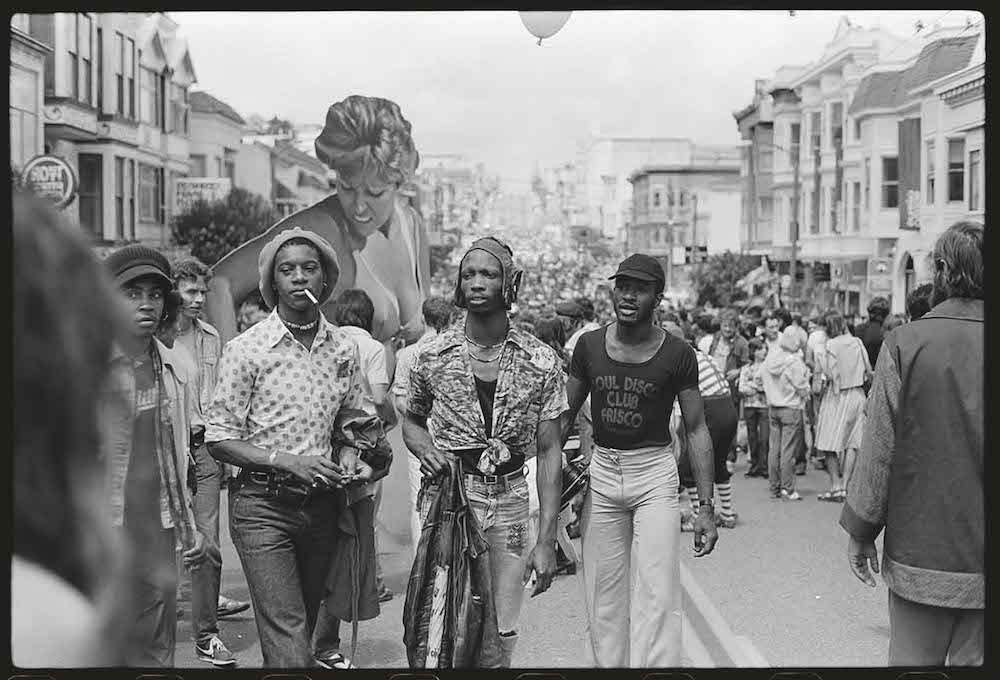
48 HILLS Looking through the book, I was hard-pressed to name any big gay moments you hadn’t been there for. What was your method for always being there — was it just through the grapevine, or were you so constantly shooting that you didn’t miss anything?
DAN NICOLETTA The irony of that inquiry is that I feel that the end result of the book is only a rudimentary synopsis of the gay liberation movement in San Francisco. So I actually feel it falls somewhat short of including all the wonderful people and moments I wanted to include, but the book kept growing to 200, then 250 pages and finally more than 300 so we had to call it quits at some point! Tony and the publishers were so supportive, but also like, OK, we have to stop now.
The challenge was, how can we honor everything that happened, despite the fact that I wasn’t really that rigorous in my work. I was rigorous by way of what my peculiarities and interests were, and that’s part of the strength of the work. But I didn’t necessarily fancy myself a journalist or a historian, I fancied myself an artist, but in my own, different way.
The most recent photo in the book is Richard Lusimbo, the very brave activist from Uganda, in 2016. And he was in San Francisco as part of a lawsuit against anti-LGBT missionaries in Uganda, and being hosted by the Rainbow World Fund. When I was in San Francisco, I called up RWF and they arranged a photography session — so there are perks of being connected in the community for 40 years [laughs].
There is one thing that I really regret not including more of in my work — just something that was growing while I was working, and so important to the shape of the movement. And that is the transgender community. I was fortunate to have captured so many fantastic transgender people over the years, from studio photography to the nightclubs and some political actions. But I just feel like I missed the transgender community in some fundamental way, and I am still pushing myself to make up for that. I also really wanted to honor intersex rights campaigners and personalities better, and that will definitely get fixed in my next, studio-based book.
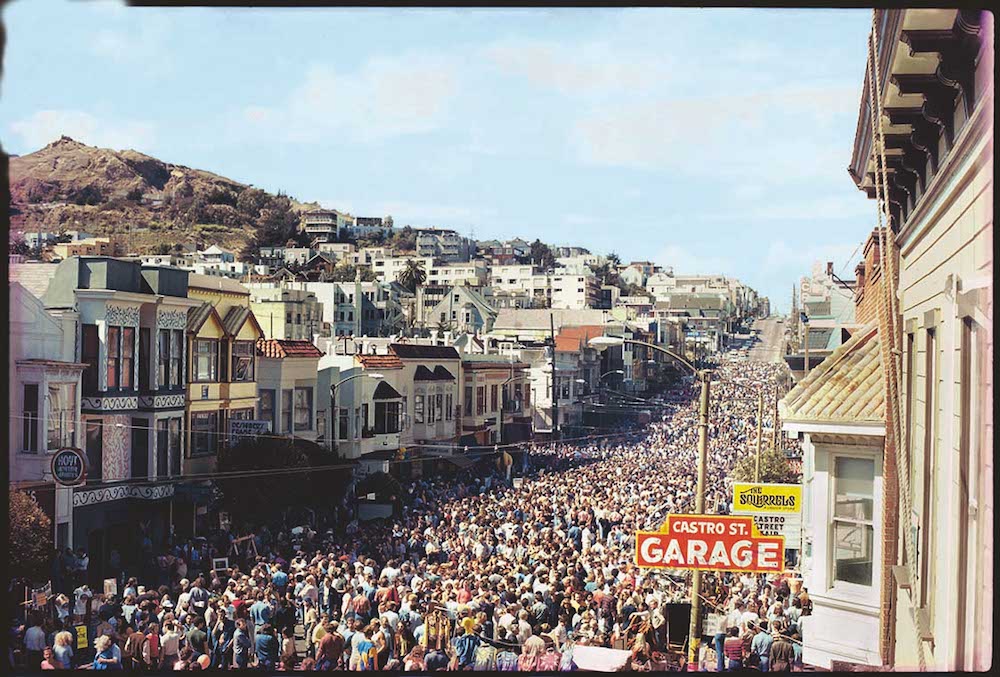
48 HILLS The book certainly serves as a showcase of your artistic eye, but you also don’t shy away from telling some hard journalistic truths about the gay community. I was struck by your photos of a crystal meth pipe, for example, and of a homeless man named Stretch with a shopping cart full of recyclables, and of an empty recovery meeting room …
DAN NICOLETTA I discovered the maxim that comes from the disabled community, ‘nothing about us without us.’ The default had always been that everything in the book was from the perspective of an insider, and that was generally true of my trajectory. And so, the recovery stuff was my story. I did have the leverage of having lived through speed addiction and all of that stuff, and I knew Stretch, and just like everything else in the book it was my immediate sphere of experience. I felt really comfortable — and that it was necessary to include these issues, very strongly.
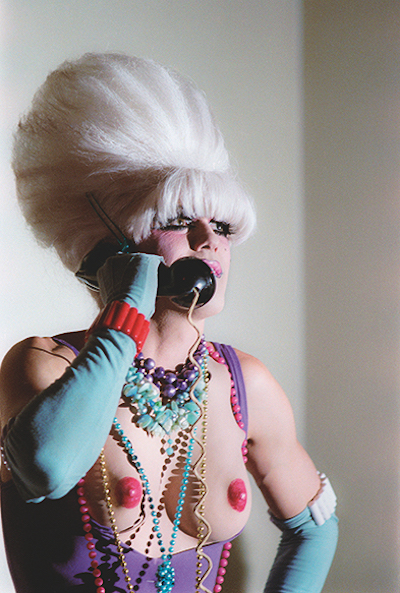
48 HILLS Of course I loved all the nightlife photos, and you captured almost everybody I can think of, from Doris Fish to Glamamore …
DAN NICOLETTA That’s a wonderful arc, Doris Fish to Glamamore. It’s funny, because whereas I was somewhat thorough about nightclub photography, the direction was more about the theatrical in life. So whether it was a street fair or a nightclub, my natural propensity was to capture this colorful drama being presented.
A lot of the way the photos turned out were technically tied to the environment. For instance, I personally do not like direct flash photography, but what else can you do in a nightclub? And the way those photos would turn out would in turn become the “look” of the person being photographed — it’s very hard now to look back and imagine nightclubs where everyone wasn’t being hit by this direct light right in their eyes. [Laughs.]
Another funny thing is that, a place like Club Uranus at the EndUp in the ’90s, those were my people. And yet I only shot in there once. But the pictures turned out so fantastic — that’s the kind of place that it was — that I felt I didn’t have to do it again. I was fortunate enough to get some of these folks in a studio setting as well. But the ball rolled on and you grabbed your camera and went to the clubs and parties and captured what you could.
At some point however, especially if you take a more studio path, you have to let go of the verité approach and concentrate on studio work. That’s when you let the kids just getting off the bus to our city of Oz with big dreams grab their cameras and go out into the night, capturing that magic.
LGBT San Francisco: The Daniel Nicoletta Photographs
Thu/24 Slideshow talk and signing at SF Public Library Main Branch, 5:30pm-7pm, free, more info here.
Thu/24 Dan Nicoletta reception at War Memorial Green Room, 7pm-10pm, free, more info here.
Sun/27 Presentation and signing at Dog-Eared Books Castro, 2pm-4pm, free, more info here.
> Need a car to get there? Rent one in your neighborhood on Getaround. Sign up today, and enjoy $50 off your first trip: http://get.co/48h. [Sponsored]

